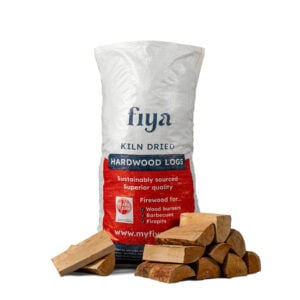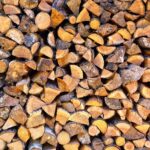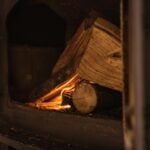Your basket is currently empty!

How to Clean a Wood-Burning Stove
A clean stove gives you a better fire. You get a clearer view of the flames, a more efficient burn, and the peace of mind that you’re caring for your appliance correctly. Remember, proper care also prevents damage and makes sure you get the most heat out of every log, which is important for anyone using their fire to manage energy costs. Whether you’re an experienced user or still learning the best way to use your new stove, this simple guide will help you keep it looking and working its best.
Contents
When to Clean
Knowing how often to clean removes the guesswork. Here’s a simple schedule to follow.
- The Ash: You don’t need to clean the ash out after every fire. In fact, a thin layer of ash (about 1cm deep) on the bottom of the stove creates an ideal bed for the next fire to catch and burn efficiently. You should only clean out the excess ash when the pile gets deep enough to touch the underside of the fire grate.
- The Glass: The glass door should be cleaned whenever your view of the fire becomes hazy or obscured. How often this is needed depends heavily on the wood you burn. Using high-quality, dry firewood will dramatically reduce the build-up of soot on the glass, meaning less cleaning for you.
- The Chimney: Once a year, preferably before the winter burning season begins, you should book a professional chimney sweep. This is essential for safety and efficiency. It’s also a good time to give the stove a more thorough inspection yourself.
What You’ll Need
You don’t need any special equipment. A few simple household items are all it takes.
- A dust sheet or old newspapers
- A small metal shovel and a soft brush
- A metal bucket for the ashes
- A bowl of water
- Paper towels or a soft cloth
Four Simple Steps to a Clean Stove
Follow these steps to clean your stove safely and effectively.
- Ensure It’s Completely Cold
This is the most important rule. Never attempt to clean a stove that is still warm. The ashes can look cool on top, but often hide hot embers underneath for a surprisingly long time. To be safe, wait at least 24 hours after a fire has gone out completely before you begin cleaning.
- Cleaning the Inside (The Ash)
Lay your dust sheet or old newspapers down in front of the stove to protect your floor. Open the stove door and use the small shovel to gently scoop the excess ash into your metal bucket. Use the soft brush to sweep out the corners, but remember to leave that thin 1cm layer on the bottom to help your next fire.
Warning: If ash builds up to the point where it touches the underside of the cast iron grate, it can prevent air from circulating and cooling the metal. This can cause the grate to overheat, warp, or even crack over time, leading to an expensive repair. As a rule, empty the pan when it is about two-thirds full.
- Cleaning the Glass (The Natural Way)
This is a simple trick that works remarkably well without any harsh chemicals. Take a piece of paper towel, dip it in your bowl of water to get it damp, and then dip it into the fine wood ash you’ve just collected. The ash acts as a gentle, natural abrasive. Rub the ashy paper towel on the inside of the glass in a circular motion. You’ll see the soot and tar lift away easily. Use a clean, damp paper towel to wipe off the residue for a sparkling, clear finish.
- Checking the Outside
For the stove’s body, a quick wipe with a dry cloth is usually all that’s needed to remove any dust. Take a moment to check the rope seal around the inside of the door. It should be soft and intact. If it’s brittle or coming loose, it will need replacing to ensure your stove burns efficiently and doesn’t draw in too much air.
Pro Tip: The baffle is a removable metal plate at the top of the inside of your stove, which helps it burn efficiently. Soot and creosote can build up on top of it where you can’t see. Once or twice during the winter, after the stove is completely cold, remove the baffle plate according to your stove’s instructions. Use a firm brush to clean off any debris that has collected on top of it, letting it fall into the firebox to be cleaned out. This improves your stove’s efficiency and removes a potential fire hazard.
Safe Ash Disposal
Because embers can stay hot for days, you must handle ash with care. Once you’ve collected the ash in your metal bucket, place the bucket outside, away from your house or any flammable materials. Leave it for at least 48 hours to ensure every single ember is completely out before you transfer the ash to your main outdoor bin.
If you have a garden, cold wood ash can be a great addition to your compost heap. Wood ash is rich in potassium (also known as potash), a vital nutrient for plants that promotes flowering, fruiting, and general hardiness. It’s the “K” in the NPK ratio you often see on fertilisers. It also contains other beneficial minerals like calcium carbonate, which acts like lime, as well as magnesium and phosphorus. Adding ash to your compost enriches the final product with these essential elements.
Ready for the Next Fire
That’s it. Your stove is now clean, cared for, and ready for its next use. This simple routine will help you enjoy a clearer, warmer, and more efficient fire every single time you light it.





